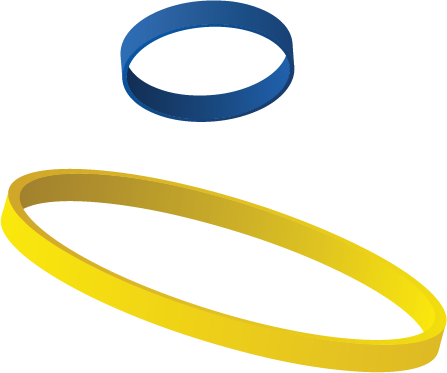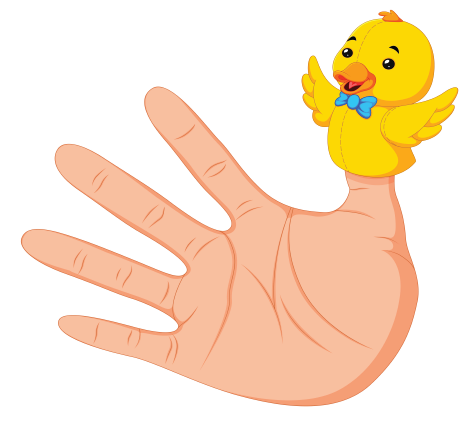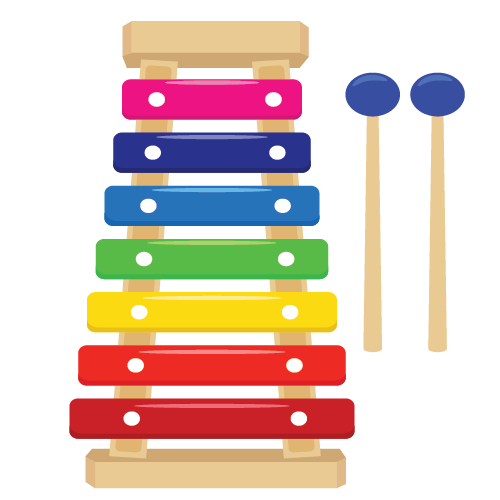
Prep. Lesson 15. Vocal pitch matching
- Finger bird puppets, two hand puppets,
- Giant rubber bands, eight beach balls, scarves
Difficulty: ![]() Prior learning: High & low sounds
Prior learning: High & low sounds
![]() Students will explore pitch by matching high and low sounds with elastic band movements, developing their listening and coordination skills.
Students will explore pitch by matching high and low sounds with elastic band movements, developing their listening and coordination skills.

 Success Criteria
Success Criteria
- I can expand the elastic band for high notes and make it smaller for low notes.
- I can listen carefully and match the pitch with my movements.
- I can stretch the elastic band independently without teacher guidance.
- Explain that students will use giant elastic bands to match high and low sounds with their voices and movements.
- When we sing high, we stretch the band to make it big; when we sing low, we make it small.
- Demonstrate holding the elastic band and show how to stretch it gently without snapping.
- Sing a simple shape or pitch pattern, such as a gentle rise and fall (“ooo” or “ahh”), while stretching the elastic band wider for high notes and smaller for low notes.
- Encourage students to copy your movements as they sing along with you.
- Repeat with different pitch patterns, gradually increasing complexity.
- Sing various pitch patterns while continuing to model the elastic band movements.
- Gradually reduce the amount of modelling, encouraging students to take the lead in moving their elastic bands in time with your singing.
- Provide gentle guidance and feedback.
- Sing pitch patterns without demonstrating with the elastic band.
- Allow students to stretch and shrink their bands independently to match the pitch they hear.
- Observe and provide encouragement or gentle corrections where needed.
![]() Students will explore pitch and movement through a song, using scarves to represent changes in pitch and direction.
Students will explore pitch and movement through a song, using scarves to represent changes in pitch and direction.
![]() Lyrics
Lyrics
Here we go up, Here we go down,
Now we are spinning around and around.
Here we go up, Here we go down,
Now we are falling like leaves to the ground.
- Teach the song to ensure students are familiar with the melody and lyrics.
- Distribute scarves to each child. Ensure each has space to move safely.
- Instruct students to crouch low while holding the scarf for “Here,” then bend their knees for “we.” Stand up tall for “go” and stretch upwards, flying the scarf high for “up.”
- For “Here we go down,” have students reverse the motion. They should lower the scarf slowly as they bend back down, letting it float gently toward the ground.
- On “Now we are spinning around and around,” direct students to spin gently while waving the scarf in circular motions.
- Repeat the actions and movements for the song, reinforcing the sequence.
- For the final line, instruct students to stand still and then drop their scarves to the ground, letting them fall like leaves.
- Repeat the activity to allow students to gain confidence with the actions and movements.
 Success Criteria
Success Criteria
- I can perform actions that match the pitch and direction of the song.
- I can use the scarf to visually represent the pitch and movement.
- I can follow the sequence of actions independently.
![]() Students will explore pitch by arranging and identifying the pattern of high and low sounds using beach balls as visual representations.
Students will explore pitch by arranging and identifying the pattern of high and low sounds using beach balls as visual representations.

 Success Criteria
Success Criteria
- I can place the beach balls to represent the pitch of the notes in the song.
- I can recognize the pattern of high and low sounds in the song.
- I can point to the correct ball as the song is sung.
- Teach the activity by explaining that beach balls represent the high and low sounds in a song.
- Each ball corresponds to a word, and its placement indicates whether the sound is high or low.
- Distribute beach balls to a few students and explain that they will take turns placing the balls to match the sounds.
- Start by selecting one student to hold a ball low to the ground, representing the sound for "Here." Sing "Here we" and select another student to hold their ball slightly higher for "we."
- Repeat with "Here we go," asking the class to observe the sounds going higher. Select another student to place a ball even higher for "go," allowing them to ask the class for help.
- Continue with "Here we go up" and "Here we go down," placing balls lower for the descending sounds.
- Once all the balls are placed, guide the class in observing the pattern and noticing whether it moves up or down.
- Sing the song as a group, pointing to each ball on the corresponding word.
- Have students take turns pointing to the correct ball. Ask them to use their hands to visually follow the pitch, moving up or down with the ball placements.
- Conclude by asking how placing the balls helped them understand the high and low sounds in the song. Encourage them to reflect on patterns they noticed in the movement of sounds.
![]() Students will learn to identify high and low sounds and associate them with corresponding visual cues and movements through interactive play.
Students will learn to identify high and low sounds and associate them with corresponding visual cues and movements through interactive play.
![]() Lyrics
Lyrics
I can sing high. I can sing low.
Now I'm in the middle, and I don't know where to go.
My voice goes here!
- Teach the activity by introducing the two puppets, "High" and "Low," and explaining that each puppet represents either a high or low sound.
- Then, demonstrate by singing a random sound and raising the correct puppet to match.
- Encourage the children to listen carefully and point to the puppet they think is singing.
- Begin the game by having the children gather in the middle of the room.
- Explain that when the puppets sing, they will run to the part of the room designated for high sounds if "High" sings or to the part designated for low sounds if "Low" sings.
- Start by raising "High" or "Low" and singing the corresponding sound. Give the children a moment to listen, and then they can run to the correct part of the room.
- Repeat with a mix of high and low sounds, ensuring students associate each puppet with its corresponding pitch.
- Continue the game, varying the high and low sound sequences to keep the activity engaging.
- Observe the children as they respond, providing encouragement and gentle corrections if needed.
 Success Criteria
Success Criteria
- I can identify whether a sound is high or low.
- I can point to the correct puppet representing the sound.
- I can run to the correct part of the room based on the sound I hear.
![]() Students will explore pitch by using high and low sounds to guide movement, developing their listening skills and understanding of pitch variation.
Students will explore pitch by using high and low sounds to guide movement, developing their listening skills and understanding of pitch variation.
![]() Story
Story
- The baby birds are learning to fly on a sunny day, starting on their branch.
- Sometimes, a strong gust of wind carries them higher (high sounds).
- When the wind becomes very strong, they soar high in the sky (very high sounds).
- When the wind settles, they return to the branch (branch sound).
- If the wind stops, they gently fall to the ground (lower sounds).

- Distribute bird finger puppets to each student.
- Explain that their bent arm will represent the bird’s branch, and the bird’s movements will respond to the sounds they hear.
- Introduce the story: The baby birds are learning to fly and sitting on their branches. Their movements depend on whether the sounds they hear are higher or lower than the branch sound.
- The bird can fly upwards if a sound is higher than the branch sound. If a sound is very high, the bird soars. If a sound is lower, the bird stays on the branch or falls gently to the ground.
- Sing a steady pitch to establish a branch sound and ask students to place their bird puppets on the branch.
- Sing a variety of sounds higher or lower than the branch sound.
- Higher sounds: Students move their bird upwards to show it flying.
- Very high sounds: Students move their bird dramatically to show it soaring.
- Lower sounds: Students keep their bird on the branch or gently let it fall to the ground.
- Narrate the story as you sing, varying the pitch throughout.
- Students respond with their bird puppets based on the sounds they hear.
- Ask students to reflect on how they decided whether their bird should fly, soar, or stay on the branch.
- Provide feedback and praise for their active listening and creative movements.
 Success Criteria
Success Criteria
- I can identify whether a sound is higher or lower than the branch note.
- I can move my bird puppet correctly based on the pitch of the sound.
- I can participate actively and follow the story through movement.
![]() Students will explore pitch movement using xylophones to represent "up" and "down" in the song, developing their understanding of pitch direction.
Students will explore pitch movement using xylophones to represent "up" and "down" in the song, developing their understanding of pitch direction.

- Begin by singing through Incy Wincy Spider with the students, ensuring they are familiar with the melody and lyrics.
- Stand a xylophone vertically to represent the pitch moving from low to high to represent high and low sounds.
- Demonstrate by singing the word "up" while glissandoing upwards (from low to high).
- Similarly, sing the word "down" while glissandoing downwards (from high to low).
- Allow selected students to use the xylophone to perform the glissando up and down while the rest of the class sings and performs actions.
- Rotate students as needed, ensuring everyone can observe and, if possible, try the glissando.
- For classes with limited xylophones, create small groups and rotate them through the activity.
- Sing through the song as a group, with selected students playing the xylophone and the rest performing the actions.
- Emphasise the connection between pitch movement and the lyrics as students sing and observe.
 Success Criteria
Success Criteria
- I can use the xylophone to glissando upwards for "up" and downwards for "down."
- I can identify pitch movement and connect it to the song’s lyrics.
- I can participate by singing and performing actions for the rest of the song.
Suggested lessons
Y1. Beat II

Y1. Beat III

Y1. Beat IV

